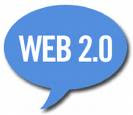
This is as close to a magic formula as you can get. There's a lot more to writing ads than following a formula, of course, but having this framework should get you well on the way to writing a competent, if not great, marketing piece.
If you've been digging around at the library and gotten into the archives of the masters you've almost certainly discovered the formula of AIDA = Attention, Interest, Desire and Action. that's a good start, but this is how it's really done.
As you write your piece, try to get into the head of your client or prospect. What exactly are they looking for and how would they benefit from using your product or service? Furthermore, how would they benefit by buying from you rather than a competitor. So.. give it a shot.
Just one thing.. make sure you budget a whole bunch of time - even a short piece can take a non-writer as long as 10 to 20 hours to get right.
Here you go:
1. Headline (the "Attention" part)
This is, by far, the most important element - this has to be a big, bold promise of some kind. Give them a reason to read the next line.
2. Sub-Headline.
Just as the purpose of the headline is to get you to read this line, the purpose of this line is to get them to read the next line. Plus, backing up the promise is really important.
3. Benefits (sort of today's version of "Interest.")
Use the benefits of your product (as opposed to features) to put your prospect smack in the middle of the picture. How should your customers feel when they're using it? How would they feel if they missed out?
4. More Benefits.
Skepticism is high these days; it takes a lot to convince people.
5. Proof.
Testimonials work. Amazing facts are always good. Easy-to-understand statistics help, too. That sort of thing. Prove that your product does what you say it will do.
6. Risk Reversal.
How about a money-back guarantee? There can be no risk whatsoever.
7. Photo.
This isn't required, but it will definitely increase your response rate. Show someone enjoying the product. Illustrate the benefits. Even a photo of you, which personalizes the piece and makes it seem real, helps a lot.
8. Offer. (Just one, though)
You have to offer something. It's amazing how many ads are produced without an offer. "It's important to get your out name out there," is the reason heard most often. Sorry - without an offer, your ad is dead. Nothing happens.
9. Call to Action.
You must ask your prospect to do something. Really! If the rest of the ad is reasonably well-structured, people will act - they'll take advantage of your offer and do exactly what you ask them to do. This is where your ad can become your best salesperson.
10. Reducing the Resistance to Accepting Your Offer.
It's that guarantee again. And it's OK to mention it more than once - reducing your customer's risk to zero is really important.
Now.. if you really want to kick it up a notch:
11. Create a Sense of Urgency.
Use language like: "Just five days left..," "Only 12 lucky golfers will..," "Take advantage today and you'll also get.." You know what I'm talking about, right?
So there you have it. Try writing a couple different versions and split up your mailing or post two different web pages to see which one draws responses. That's how it's done..
entireweb.com
About the Author: Mike Schwagler is a direct response copywriter with over 20 years experience in industrial sales and marketing (B2B) in a wide variety of areas, including highly technical and scientific products, product assembly and services. He's also worked direct to consumer with over 12 years in residential real estate sales. You can check him out at http://biznik.com/members/mike-schwagler.
Picture from inertiagroup.com added by pitonhneg
If you've been digging around at the library and gotten into the archives of the masters you've almost certainly discovered the formula of AIDA = Attention, Interest, Desire and Action. that's a good start, but this is how it's really done.
As you write your piece, try to get into the head of your client or prospect. What exactly are they looking for and how would they benefit from using your product or service? Furthermore, how would they benefit by buying from you rather than a competitor. So.. give it a shot.
Just one thing.. make sure you budget a whole bunch of time - even a short piece can take a non-writer as long as 10 to 20 hours to get right.
Here you go:
1. Headline (the "Attention" part)
This is, by far, the most important element - this has to be a big, bold promise of some kind. Give them a reason to read the next line.
2. Sub-Headline.
Just as the purpose of the headline is to get you to read this line, the purpose of this line is to get them to read the next line. Plus, backing up the promise is really important.
3. Benefits (sort of today's version of "Interest.")
Use the benefits of your product (as opposed to features) to put your prospect smack in the middle of the picture. How should your customers feel when they're using it? How would they feel if they missed out?
4. More Benefits.
Skepticism is high these days; it takes a lot to convince people.
5. Proof.
Testimonials work. Amazing facts are always good. Easy-to-understand statistics help, too. That sort of thing. Prove that your product does what you say it will do.
6. Risk Reversal.
How about a money-back guarantee? There can be no risk whatsoever.
7. Photo.
This isn't required, but it will definitely increase your response rate. Show someone enjoying the product. Illustrate the benefits. Even a photo of you, which personalizes the piece and makes it seem real, helps a lot.
8. Offer. (Just one, though)
You have to offer something. It's amazing how many ads are produced without an offer. "It's important to get your out name out there," is the reason heard most often. Sorry - without an offer, your ad is dead. Nothing happens.
9. Call to Action.
You must ask your prospect to do something. Really! If the rest of the ad is reasonably well-structured, people will act - they'll take advantage of your offer and do exactly what you ask them to do. This is where your ad can become your best salesperson.
10. Reducing the Resistance to Accepting Your Offer.
It's that guarantee again. And it's OK to mention it more than once - reducing your customer's risk to zero is really important.
Now.. if you really want to kick it up a notch:
11. Create a Sense of Urgency.
Use language like: "Just five days left..," "Only 12 lucky golfers will..," "Take advantage today and you'll also get.." You know what I'm talking about, right?
So there you have it. Try writing a couple different versions and split up your mailing or post two different web pages to see which one draws responses. That's how it's done..
entireweb.com
About the Author: Mike Schwagler is a direct response copywriter with over 20 years experience in industrial sales and marketing (B2B) in a wide variety of areas, including highly technical and scientific products, product assembly and services. He's also worked direct to consumer with over 12 years in residential real estate sales. You can check him out at http://biznik.com/members/mike-schwagler.
Picture from inertiagroup.com added by pitonhneg




